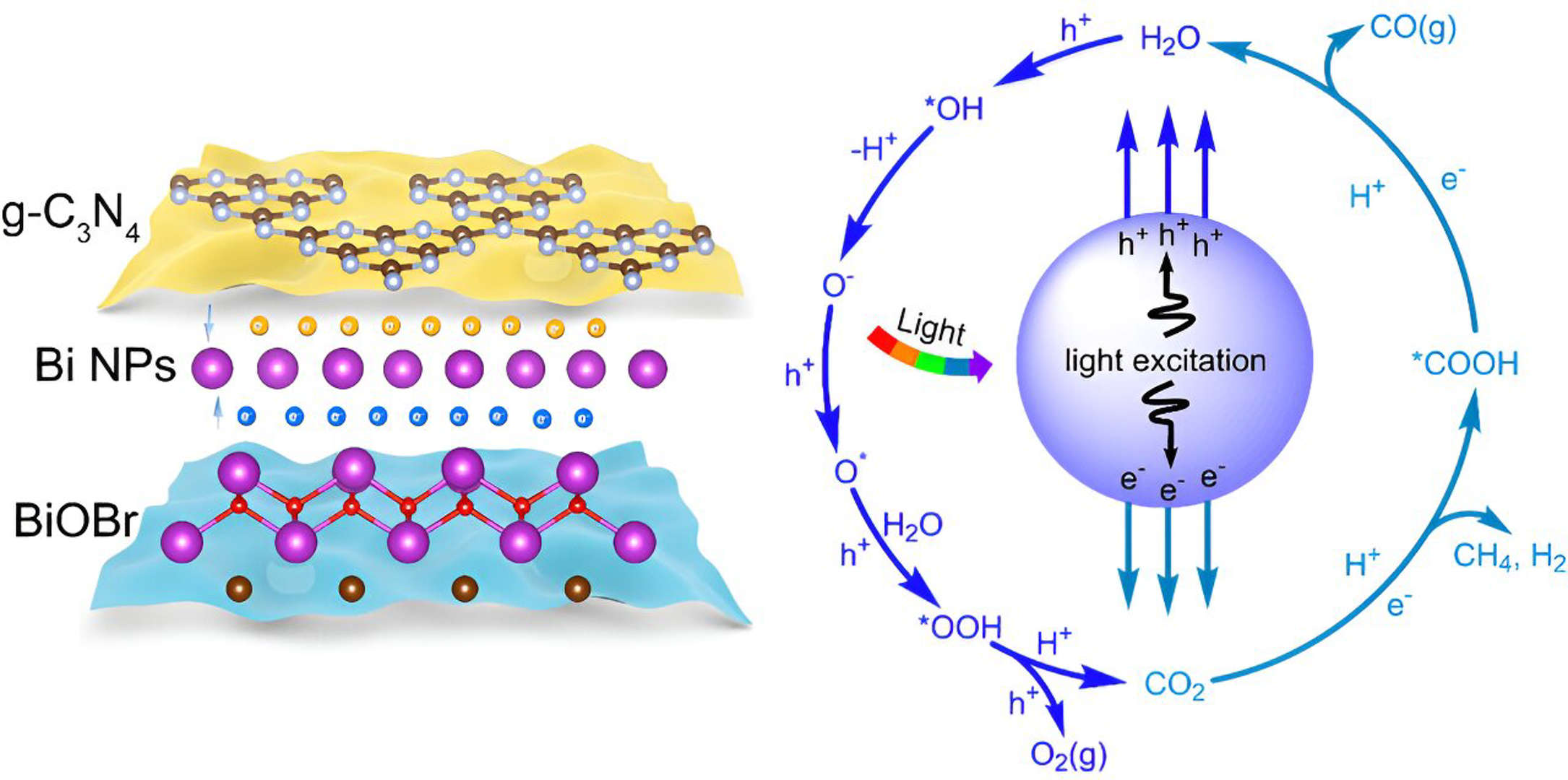Photocatalytic CO2 reduction to high-value carbon-based fuels has enormous potential in addressing the world’s growing energy crisis. However, the high C=O bond energy of CO2 molecules (750 kJmol-1) makes activation and reduction of CO2 difficult.
Consequently, it makes sense to develop photocatalysts with innovative electron transfer pathways. When it comes to enhancing carrier transport, the creation of multi-electron channels based on layered materials is clearly superior to the conventional single electron transfer channel. However, it is highly difficult to rationally design a desirable photocatalytic model with optimized parameters for multi-electron channels.

Prof. Jizhou Jiang of Wuhan Institute of Technology, China, recently designed and oversaw a study titled Constructing dual electron transfer channels to accelerate CO2 photoreduction guided by machine learning and first-principles calculation.
In order to successfully predict and prepare a novel BiOBr-Bi-g-C3N4 sandwich structure with dual electron transport channels for photocatalytic CO2 reduction, this work combines machine learning and first-principles calculations. The novel structure’s beneficial activity can be attributed to three main factors:
(1) the g-C3N4 nanosheets that were introduced show that their energy level structure is similar to that of BiOBr, which is advantageous for the formation of an electronic superposition state;
(2) The unique double electron transfer channels allow for the efficient separation and transfer of the excited carriers;
(3) In order to optimize the reaction pathway, a multi-timescale reaction mechanism for CO2 reduction can be built because the photo-generated carriers of BiOBr and g-C3N4 exhibit distinct time decay behaviours.
The BiOBr-Bi-g-C3N4 quantum well structure receives an improved photocatalytic performance of CO2 reduction (43 μmol g-1 h-1). The linear law of the different influence factors on the efficiency of multi-electron channels was investigated using five machine learning models. A thorough investigation of the photocatalysis mechanism was conducted.
The results were published in Chinese Journal of Catalysis.













